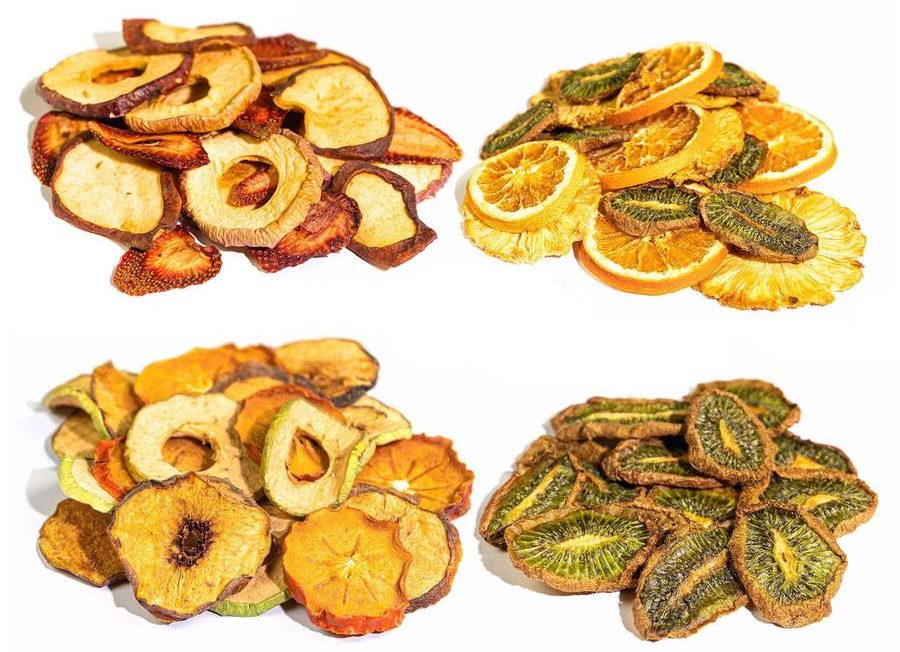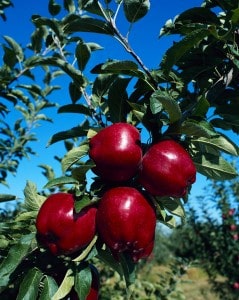Related Listening
Connect with local growers
Learn More
Relief for America’s Small Farmer’s Act,
Local Agricultural Marketing Program
Relief for America’s Small Farmer’s Act,
Local Agricultural Marketing Program
 If you’re looking for a nutritious and shelf-stable treat to bridge the gap between grocery runs, RIND dried fruit snacks are an interesting new (to me) option to consider.
If you’re looking for a nutritious and shelf-stable treat to bridge the gap between grocery runs, RIND dried fruit snacks are an interesting new (to me) option to consider.
They’re available from various online and brick-and-mortar retailers. You can also purchase them directly from the company’s website and right now they are donating a portion of all proceeds to support Feeding America‘s Covid-19 response fund.
RIND recently sent me some of their products to sample and I was quite impressed on a few levels (and when it comes to new products and snack foods in general, I’m actually kind of hard to impress…)
First, these are not your typical dried fruit snacks. RIND believes in drying “the fruit, the whole fruit, and nothing but the fruit.” That means peels and all! The result is a tangier, tarter, chewier, more grown up type of dried fruit snack.

I found the balance of sweetness, tartness, and bitterness in the dried orange, persimmon, pineapple, and kiwi much more interesting and enjoyable than bland dried apples or overly sweet banana chips. The chewiness (which occasionally tips over into toughness) also slows you down a bit, which is useful for portion control.
Preserving the peels and rinds reduces food waste, of course, but it also substantially amps up the nutritional value. Much of the fiber of fruit is found in the peels and RIND snacks are quite a bit higher in fiber than most dried fruit– up to a quarter of the day’s requirement in a single serving.
Valuable nutrients are also often concentrated in (or right under) the peel. When you peel apples, for example, you lose half the fiber and iron. And if you want to get the most nutrition out of your citrus fruit, don’t remove that white pith! It may be a bit bitter (some say pleasantly so). But it’s rich in quercetin and other antioxidants. And all of that–plus the nutrients found in the outer rind–is preserved in the RIND snacks.
RIND is a small company. (I had a couple of questions about the nutrition information and the owner called me himself to answer them). They use all USA-grown fruit and add no sulfites, sugar, or preservatives.
If your quarantine (or post-quarantine) rations could use a little brightening up, check them out! My favorite flavors are the Tropical Blend (kiwis, pineapples, and oranges) and the Orchard Blend (peaches, apples, persimmons).
[This is not a sponsored post, by the way. Just an honest review.]
 Happy Earth Day!
Happy Earth Day!
These days, we’re more conscious of how our dietary choices affect the health of our planet. But it gets complicated. Sure, buying organic products helps reduce the amount of pesticides and artificial fertilizers that are applied to the ground. But what about the environmental impact of transporting organic produce thousands of miles from its source to your table? How about all the energy it takes to process, package, and transport the organic convenience foods and all-natural junk food that fill the freezers and shelves of high-end whole-foods grocers? And to bring the conversation back to nutrition for a moment, how nutritious do you think those organic sugar-frosted corn flakes really are?
In honor of Earth Day, here are six ways to make your diet healthier for your body and the planet. Continue reading “Six Ways to Make Your Diet Healthier (for the Planet)”
Isn’t it kind of obvious that soymilk contains soy? So why would they print that underneath the ingredient list? It’s all about the Food Allergen Labeling and Consumer Protection Act of 2004.
In the chaos surrounding the novel coronavirus, there is a lot of information swirling around about foods and nutrients that can “boost your immune system.” Some of it is not terribly accurate. In this Live Q&A, I answer your questions about specific supplements and highlight the most effective things you can do to keep yourself and your family safe.
Related listening:
In this week’s Nutrition Diva podcast, I talked about the pros and cons of oat milk, the latest craze in nondairy milk alternatives.
Here’s a breakdown of the nutrition for several leading brands. (Nutrition information is for 8 fluid ounces.) Below, I’ve included the ingredients for each brand as well.
| Brand | Gluten Free? | Calories | Protein | Fiber | Sugar | Cost/fl oz |
|---|---|---|---|---|---|---|
| Califia Unsweetened | Yes | 100 | 2 | 1 | 2 | $0.10 |
| Dream Oat Beverage Original | No | 120 | 2 | 2 | 11 | $0.09 |
| Elmhurst Milked Oats | Yes | 100 | 4 | 2 | 5 | $0.22 |
| Pacific Foods Organic Oat Original | No | 130 | 4 | 2 | 17 | $0.10 |
| Planet Oat Oatmilk | Yes | 90 | 2 | 2 | 4 | $0.08 |
| The Original Oatly Oat-milk | Yes | 120 | 3 | 2 | 7 | $0.08 |
| Brand | Ingredients |
|---|---|
| Califia Unsweetened | Oatmilk (Water, Oats), Sunflower Oil, Minerals (Dipotassium Phosphate, Calcium Carbonate, Tricalcium Phosphate, Sea Salt). |
| Dream Oat Beverage Original | Oat Base (Water, Oats), Safflower Oil, Calcium Carbonate, Sea Salt, Vitamin D2, Vitamin A Palmitate, Vitamin B12, Tricalcium Phosphate. |
| Elmhurst Milked Oats | Filtered Water, Whole Grain Oats, Cane Sugar, Salt, Natural Flavors. |
| Pacific Foods Organic Oat Original | Water, Oats*, Oat Bran*, Contains 1% Or Less Of: Gellan Gum, Sea Salt, Tricalcium Phosphate, Vitamin D2. *Organic |
| Planet Oat Oatmilk | Oatmilk (Filtered Water, Oats), Calcium Carbonate, Dipotassium Phosphate (Stabilizer), Sea Salt, Gellan Gum, Vitamin A Palmitate, Vitamin D2, Riboflavin (Vitamin B2) And Vitamin B12. |
| The Original Oatly Oat-milk | Oatmilk (water, oats). Contains 2% or less of: rapeseed oil, dipotassium phosphate, calcium carbonate, tricalcium phosphate, sea salt, dicalcium phosphate, riboflavin, vitamin A, vitamin D2, vitamin B12. |
 An advocacy group called Friends of the Earth has been publicizing the results of a new study demonstrating that when people switch from a regular diet to one containing only organic foods, their exposure to pesticides is reduced.
An advocacy group called Friends of the Earth has been publicizing the results of a new study demonstrating that when people switch from a regular diet to one containing only organic foods, their exposure to pesticides is reduced.
The study recruited four families from different corners of the country. Each family ate a non-organic diet for six days and an all-organic diet for six days. The researchers found that the organic diet “rapidly and dramatically reduced exposure to pesticides.”
That’s not terribly surprising. In fact, it’s so unsurprising, it’s a little hard to imagine why the researchers felt the need to do this study.
The far more important question (not answered in this study) is: Is this something we need to worry about?
In reporting their findings, the Friends of the Earth present the difference in exposure in relative terms. “Levels of all detected chemicals dropped an average of 60.5 percent with a range of 37 percent to 95 percent depending on the compound.”
But they don’t give us any information about the absolute levels of exposure. This is at least as important as the relative exposure. Celery has 40 times as much sodium as cucumber. It’s still a low sodium food.
Did those higher levels of exposure pose any sort of threat? Or were they (as I suspect) well below the threshold of concern?
Secondly, the coverage repeatedly talks about the “pesticide levels in the bodies” of the subjects. But the study didn’t test the subjects’ blood or tissues. They tested their urine, which is where the body discards things it doesn’t want or need. Furthermore, what they found in the urine were compounds formed when the pesticides were broken down by the liver.
In other words, what they found was evidence that the body’s detoxification systems were working exactly as they are supposed to, breaking down and excreting potentially harmful compounds. The pesticides these families were being exposed to by eating a non-organic diet were apparently being eliminated from their bodies.
So I have to ask once again: Is this really something that we need to worry about?
The organization points out that one of the pesticides monitored in this study is frequently linked to farmworker poisonings. That’s a great argument for farmers using more care when working with agricultural chemicals (and that goes for synthetic as well as organic chemicals). But it doesn’t really have anything to do with risks that families might be exposed to by eating conventional produce. And yet, by juxtaposing these two facts in the press release, it implies that eating non-organic foods increases your risk of chemical poisoning. There is absolutely no data to support this implication.
Meanwhile, the press reports don’t mention that a third of the compounds they were testing for were undetectable in the urine samples after the non-organic diet. You have to wonder whether they were, perversely, somewhat disappointed by this. They certainly didn’t seem very eager to publicize the fact that some of the most common pesticides used in conventional agriculture apparently pose little risk to eaters.
So, what’s the upshot of all this?
The Friends of the Earth concludes that “these results show that eating organic works.” Works how, exactly? Yes, eating organic reduces your exposure to certain (but not all) pesticides. But does it reduce your risk of disease or harm? I don’t see any evidence of that here.
Lest you think I am pro-pesticide, or anti-organic, let me assure you I’m not. I’m just against this sort of sloppy communication and manipulative “science.”
Conventional farmers don’t use pesticides because they’re lazy, ignorant, or uncaring. They use them, as sparingly as they can get away with, in order to maximize yields and lower the cost of food. If they can figure out a way to use less, they are eager to do so.
Organic farmers use pesticides and herbicides, too, by the way. Some of these organic pesticides are highly toxic to beneficial insects and, if mishandled, can be harmful to humans, as well. But organic farmers are also working to increase yield and reduce the cost of their products. And pest control is part of that.
Instead of pitting organic growers (and eaters) against conventional, why not work together to make progress on all of these important fronts? Let’s use the best technology, the best practices and, yes, the best chemistry, to create a safer, more abundant, and more sustainable food supply.
To that end, let’s assess the risks and impacts of chemical use (both synthetic and organic). Let’s weigh the costs and benefits of various options. But let’s debate the issues on their scientific merits instead of resorting to sensational, misleading, and manipulative “research” and rhetoric.
This is not an us vs. them situation. We’re all us.